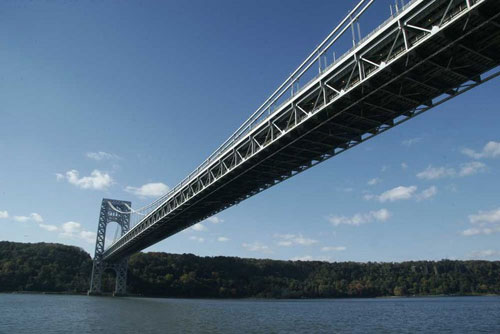 by Preston MacDougall September 10, 2007
With all the press coverage after the deadly tragedy of the unexpected collapse of the I-35 bridge in Minneapolis, people are getting a glimpse into the paradox that quantum theorists refer to as Schrödinger's cat. Imagine a cat in an electrically-shielded, soundproof box, along with a glass vial of hydrogen cyanide that has a hammer and sickle poised above it. The sickle is irrelevant, but the hammer is held in position by a latch that will release if it receives a radio signal from a Geiger counter that is also inside the box.  Credit: morguefile.com
That was a long time ago, and the polonium speck was small to begin with. Since each polonium atom has a 50-50 chance of disintegrating every 138 days, becoming a completely non-radioactive lead-206 atom, the flea collars don't "go off" very often. There is absolutely no way to predict when the next nuclear disintegration will occur, nor if the cat will be positioned such that the alpha particles hit the Geiger counter, and you can Rube Goldberg the rest. It is not difficult to accept the fact that, unless we open the box, we cannot be certain whether the cat is alive or dead. However, the strange interpretation of orthodox quantum theory is that the cat is both alive, and dead, in a so-called "super-position of states". The cat is alive in one solution to Schrödinger's wave equation for this system, and dead in the other. Both are necessary to describe the cat in the unopened box. When we open the box and observe the cat, it is said that the wave function "collapses" onto the solution that corresponds to the observation. What is certain, is that the squared values of the amplitudes of the wave functions, that were obtained as closed-box solutions, give the probabilities of the cat's various fates. The analogy of cats and bridges is not completely valid - for instance, bridges don't cough-up hairballs - but was triggered by the rating system that civil engineers use to estimate the physical integrity of a bridge. Engineers cannot predict with certainty if the bridge you may be about to cross will get you to the other side. They can only estimate the probability that it will. Thankfully, we have many excellent engineering education programs in this country, and the collapse of bridges, that are in use, is almost unheard of. What has been heard frequently in the news wake of the bridge collapse, is talk of infrastructure. Incomplete inspections, and delayed maintenance of bridges, can lead to slowly increasing failure probabilities. Or, to use the cat analogy, bridges that are eventually more dead than alive. But this is not the only infrastructure concern that weighs on bridge integrity - so does our education system. I am not suggesting that the Minneapolis tragedy had human error as a cause. Like polonium atoms, steel plates can fracture unexpectedly. And coincidences can occasionally override margins of safety that are built into designs. But, it is reasonable to expect that, over their careers, poorly educated engineers are more likely to make major mistakes than well-educated ones. So I was shocked to read an opinion, published in a major newspaper, that high schools should drop algebra as a requirement, and instead teach "infant care and child training". The author asked x engineers, where x minus 1 equals 6 divided by 2, if they used algebra in their jobs. All said "No." Two days later the bridge collapsed, and one month later a Miss Teen USA contestant amazed us on YouTube with her insight into our education system. These occurrences may be unrelated,
and to connect them absurd, but I can't help wondering if the
letter writer's engineer friends work "in the Minnesota
everywhere, like such as."
On the Web:
E-mail your letters & opinions to editor@sitnews.us SitNews ©2007 Stories In The News Ketchikan, Alaska |